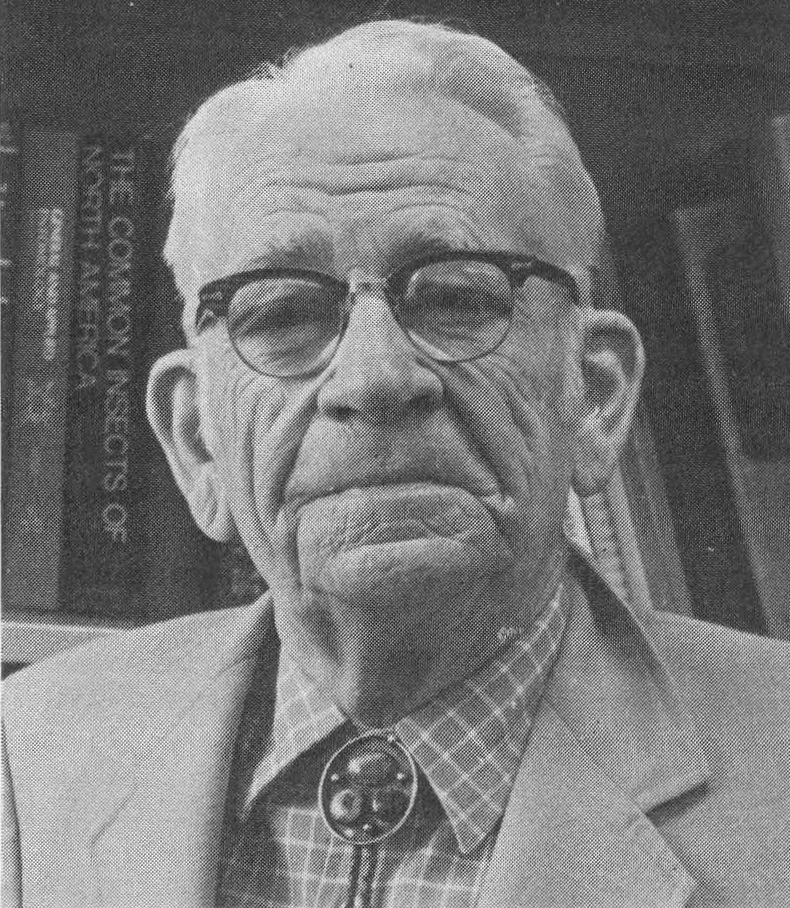
A 1953 issue of TIME magazine had this to say about biologist and sexologist Dr. Alfred Kinsey: “Kinsey...has done for sex what Columbus did for geography.” Kinsey’s influential work on human sexuality happened at a time in the US when openly discussing, much less researching, what went on in the bedroom was quite shocking. Nonetheless, his research would help usher in changing attitudes towards sex in the 1960s and 1970s. Amongst many of his accomplishments, Kinsey founded the Institute for Sex Research in 1947, was one of the first to conduct large-scale scientific inquiries into human sexuality, and published two bestsellers on sex: Sexual Behavior in the Human Male (1948) and Sexual Behavior in the Human Female (1953), none of this without controversy that lives on even today.
What many don’t know about Kinsey is that before he became a celebrity for his work on human sexuality, is that he was an entomologist and specialized in the taxonomy and individual variation of gall wasps. Gall wasps are small solitary wasps that lay eggs in the tissues of plants. The larva feeds on the plant tissue which causes the plant to develop a gall in response. The larva continues to feed and develop inside the gall which also serves as protection for the insect. There is an incredible diversity of gall types, and for an example of one from central Texas, check out our article about the Oak Gall Wasp here.

Oak gall from campus area.
In his early years, Kinsey studied applied biology. He was very much influenced by the work of his mentor, myrmecologist William Morton Wheeler, who taught at UT from 1899-1903. Driven to create a massive and detailed study of the evolutionary taxonomy of the gall wasp, Kinsey amassed a large collection of galls. He traveled to 36 states in the US as well as parts of Mexico to gather them. His trips would amount to being around 18,000 miles. Kinsey had this to say about collecting specimens: “If your collection is larger, even a shade larger, than any other like it in the world, that greatly increases your happiness. It shows how complete a work you can accomplish, in what good order you can arrange the specimens, with what surpassing wisdom you can exhibit them, and with what authority you can speak on your subject.”

Dr. Osmund P. Breland, who studied under Kinsey. (Photo by Christine Gilbert)
Kinsey also kept stacks of meticulous notes on his wasps, notes that included dozens of measurements per specimen, written in tiny numbers on graph paper. The wasps he studied are small, about 8 millimeters on average, so one can imagine the challenges of getting accurate measurements.
When did Kinsey switch from entomology to human sexuality? It was around 1938, when Kinsey was a professor of entomology at Indiana University, that he started teaching a class about marriage. This class was designed to teach students about sex. The problem was, Kinsey could find almost no scientific work about human sexuality. He became compelled to start filling that gap. Some also suggest that Kinsey made this career move because of not being offered a professorship at a university he deemed more prestigious, despite the accolades he received for his publications The Gall Wasp Genus Cynips: A Study of the Origin of Species and The Origin of Higher Categories in Cynips.
Before Kinsey switched from insects to sex, he had a graduate student who would become a UT professor and contribute greatly to the taxonomy and systematics of mosquitos. This student was Osmund P. Breland. Breland did his graduate work at Indiana University in the 1930s, with his research focus on the biology and taxonomy of callimomid wasps. During this time, Kinsey lent several hundred wasps to Breland, specimens which are now part of the Entomology Collection.
When Kinsey passed away in 1956, his wife, Clara Bracken McMillen, donated the bulk of his gall wasp collection to the American Museum of Natural History. This collection resides in the Division of Invertebrate Zoology and amounts to a whopping 7.5 million specimens.



